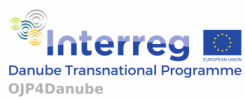Main result is a strengthened and interconnected digital infrastructure that is aligned on organisational and technical level between key actors across the borders and eases the integrated supply of cross-border multimodal traveller information on transport corridors crossing the DR and the connected regional and local networks by the novel approach of OJP. This digital
infrastructure consisting of inter-linked travel information platforms in 6 different countries which are operated by key players in the field of multimodal travel information (i.e. PT operators, railway operators, PT information operators) will allow to exchange most up-to-date travel information between the connected systems as the data are requested and provided by the source systems, which maintain the data in highest quality, granularity and up-to-dateness.
Building on the learnings and interfacesdeveloped in LinkingDanube this project will go two steps further by exploiting the advantages of considering the full multimodal transport chain with bike routing as central aspect. Along the exchange infrastructure built up in the project the data sources can be interconnected on demand. This is highly beneficial as it will be possible to access information outside of the coverage area of the single systems. For travellers in the DR this digital traveller information network will strengthen the accessibility of sustainable transport options (also outside of the own town or region) with emphasis on bike (esp. for local and regional mobility) and on public transport (rail, bus, ferries). Travellers will get detailed information for local multimodal trips as well as for multimodal long distance trips within one single service incl. all available modes, routing and details of their journey. OJP4Danube will pay particular attention to bike mobility for tourists, but also for daily commuters. The digital traveller information network will close information gaps on missing links in the transport chains.
